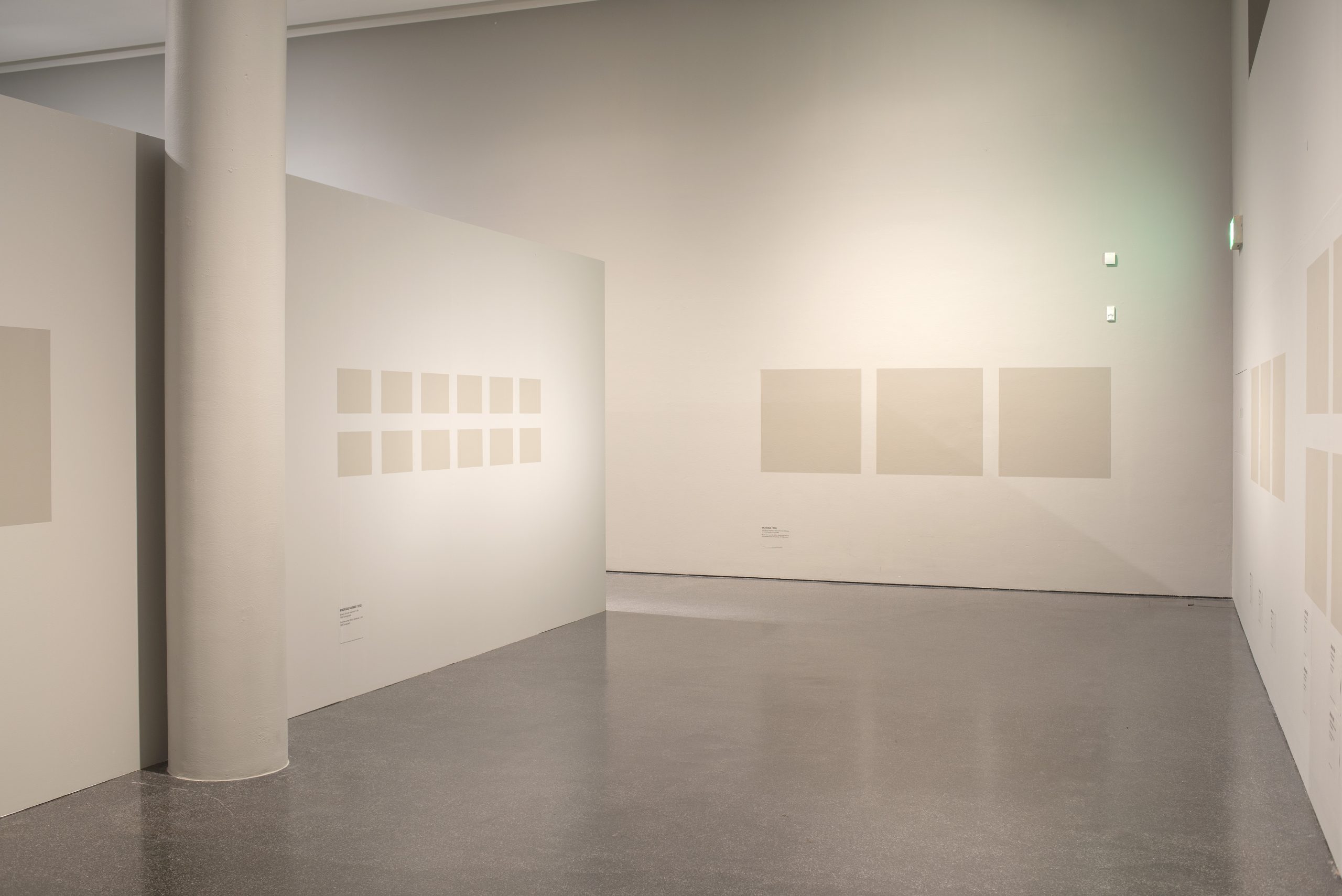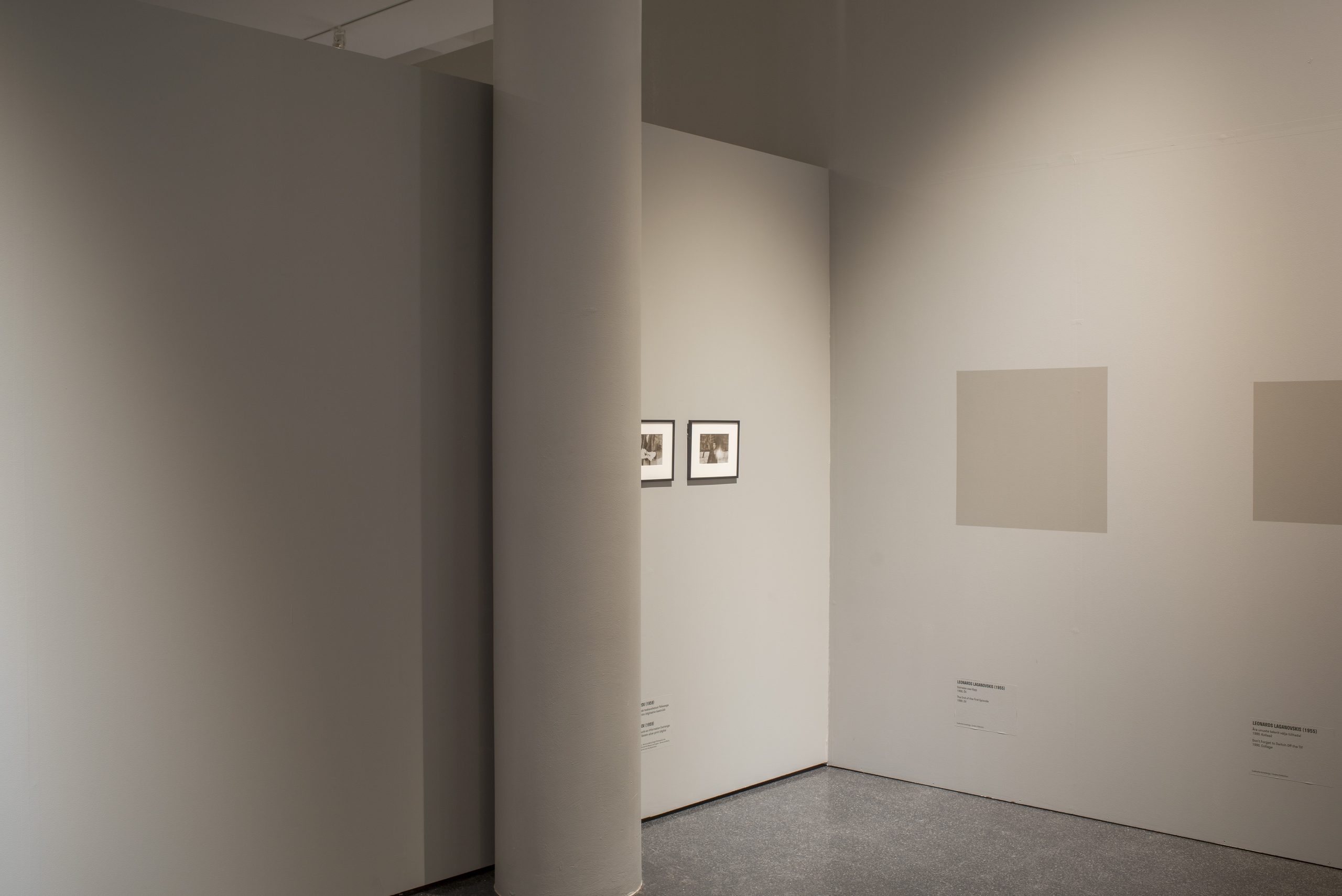On 17 February 2022, crates with over a hundred works representing Moscow and Baltic Conceptualism arrived at Kumu Art Museum in Estonia from the Zimmerli Art Museum in New Jersey. A five-year-long cooperation between the two museums to organise Thinking Pictures. Conceptual Art from Moscow and the Baltics was coming to an end. The three curators of the exhibition – Anu Allas, Liisa Kaljula and Jane A. Sharp – had met in New Jersey to start research at the Norton and Nancy Dodge Collection of Nonconformist Art from the Soviet Union in 2016.
The Covid-19 pandemic, economic instability and climate change were already in effect, when the war hit Eastern Europe at the beginning of 2022. So, on the one hand, cultural institutions had already had some experience in crisis management, but on the other, resources were slowly being depleted and nervousness had started to set in. How could we manage the programme and the budget in the fog of such a crisis, as it was impossible to foresee what happens next year, even next month or next week? How long will the war last? Will it bring additional economic turbulence? Or spill over into other countries in Eastern Europe? Might it happen that in addition to programme changes and budget cuts, the museum might have to evacuate whole collections or be required to offer bomb shelter for hundreds of people? This was the context in which discussions between the directors and the curators got under way, and as a public institution, we also had to take time to reach a consensus. The Estonian Ministry of Culture left museums full autonomy to make their own decisions during the crisis, but also the responsibility for their programming choices. While the management was worried of not being able to protect the museum in case of incidents, the curators were against leaving out artists based on their Russian/Slavic sounding family names, since avoiding the splitting of unofficial art according to nationality had been the aim of the project from the very start.
In the end, a consensus was reached in the museum: to open the exhibition with empty halls as an anti-war statement and an act of solidarity from one post-Soviet nation to another and install the works gradually, while closely following developments in Eastern Europe, hoping for the war to end soon.

By the beginning of April, war crimes committed by the Russian army were beginning to emerge and it was becoming chillingly clear to us Eastern Europeans that genocide was being carried out in Ukraine, while Western Europe still refused to believe their eyes.
Our exhibition halls were kept empty at the time, and it was then we truly realised what a sensitive job our exhibition designers had done just a few weeks earlier. In only two nights Mari Kurismaa and Tuuli Aule had come up with a design for a grey space where all museological elements, such as podiums, vitrines, wall texts and etiquettes would be present, while the art works would be missing, only to be marked by ghostly grey shapes on the walls. From one perspective, the design was inspired by the conceptual art histories, where classical art objects would disappear and be replaced by a critical discourse that would ask questions about the institutional positioning of art. But from another perspective, the post-apocalyptic grey space, or so we assumed, would be reminiscent of the black-and-white photographs of European museums during World War II, of the ghostly Louvre and Hermitage, where empty frames were the only signs left of the artworks that once inhabited these spaces. Or the countless Eastern European museums that were bombed and turned into dust during the war; among these museums was also the predecessor of the Art Museum of Estonia, destroyed in the 1944 March bombing of Tallinn by the Soviet air force. But this immersive environment, or so we hoped, would not only resonate with the feelings of Estonian citizens – our regular visitors – but equally so with tens of thousands of Ukrainian refugees who had reached Estonia during the first months of war and were granted free entrance to museums.
During the first sombre weeks, when the exhibition stood empty and the grey shadows painted on the walls marked the missing art works, we unconsciously animated several other traditions of the war time museum. Such as giving curatorial tours to our visitors and telling them about paintings that were not there and activating the imagination of our visitors. Additionally, the instructors of the museum’s education department gave handicraft workshops outside the museum for Ukrainian children who made up a considerable proportion of the refugees. Even though the war remained more than a thousand kilometres away from us, these ghost tours and the workshops were our way of tackling the new dark realisation that Eastern Europe was no longer a safe place, that we were once again living on the geopolitical seismic border between East and West. The way many Estonians feel about Ukrainians, sending money and delivering medical supplies and everyday items in their own cars, showed that the Russian aggression had indeed activated the Soviet era layers in the national psyche. We can see the same happening in Latvia, Lithuania and Poland, all the countries of Eastern Europe that know what it means to be under Moscow’s dictate. Even though there are some smaller and bigger gaps in our Eastern European chain of solidarity, it has been great to see how the former Eastern bloc is now taking an approach to European foreign policy based on values rather than pragmatics. The Estonian prime minister Kaja Kallas and Lithuanian foreign minister Gabrielius Landsbergis soon became the Baltic voices of this consciousness also in the international media.
One of the aims of our solution was to provoke discussion about the role of culture during such a crisis and the mission of museums during war. The empty halls were, perhaps, irritating to some of our audience, but we still hoped the display would be viewed as a critical museological experiment by many. And in this we did succeed, as the exhibition was reviewed from a variety of perspectives: some of the reviewers praised us for a sensitive solution, while others condemned us for not having the courage to show Moscow dissidents. For example, while the Ukrainian artist Bohdana Korohod saw the exhibition as a decolonial statement of letting go of the Moscow-centred art histories,

After the first month of total silence in the exhibition space, we started installing the first works at the end of April, adding carefully only one work or one series to each of the themed rooms, installing a new one every two weeks. To avoid highlighting works based on the nationality of the artist, we decided to install black-and-white works first and move slowly towards the more colourful material, treating the Moscow and the Baltic material the same way. In the room titled Fading Images, we started with the Russian artist Vadim Zakharov — who was protesting in front of the Russian Pavilion at the Venice Biennale around the same time — to talk about the disappearing of Russian culture during the war. The first dialogues in the exhibition hall between the Baltic and the Moscow artists were beginning to appear somewhere in the middle of May, and we witnessed no anger among the visitors, no incidents of pouring red colour over the famous works of Moscow conceptualism. I went to the exhibition hall regularly to ask guards if anything had happened, but the guards only passed on complaints about missing labels or lack of light in places where wheelchairs could access the exhibition, never about the content of the exhibition. But we were still making plans no more than two weeks ahead and found ourselves in a position contrary to the role of the curator as we had known it so far. Instead of having a sense of control and totality of vision, both of these had long slipped through our fingers like sand. In fact, the design of the exhibition was the only solid thing about the whole project: the grey shapes were painted on the wall, so they either had to be filled or left there to speak of the gaps, the missing works. And only later did we find out from the Lithuanian feminist curator Laima Kreivyte that what we had done was post-curating, an art of public discourse rather than curatorial act of power.
